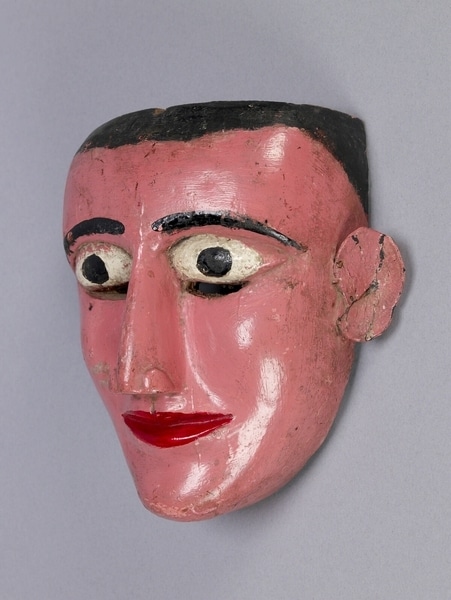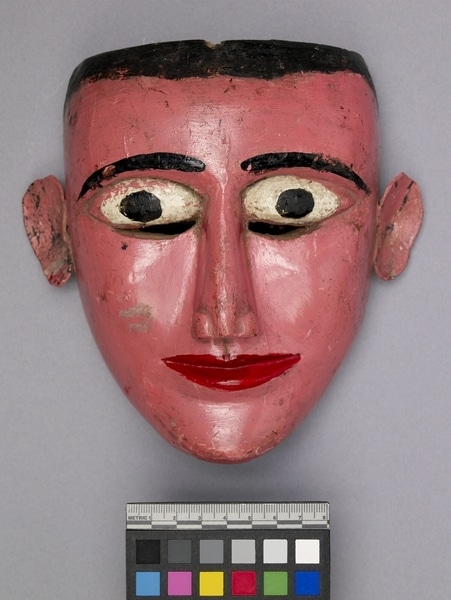Mask Item Number: Eh11 from the MOA: University of British Columbia




Description
Mask representing a village husband character (kolam mask) with a pink face, a low forehead with a flat top, painted black hair and eyebrows. The large eyes each have a crescent-shaped slit under them, and the nose is long, straight and narrow with small, indented nostrils. The mouth is closed with thin red lips. The ears are each made of a piece of cut rubber (?) that has been cut at the centre and the resulting corners bent inwards slightly to make each concave. There is a small hole on each side, behind the ears. A label on the reverse reads, "KOLAM MASK village husband," in typewritten characters, and "41" in pencil.
History Of Use
The Kolam is a secular entertainment with considerable elements of social satire. It incorporates narrative, mime, dance, and music. A Kolam performance usually has four episodes the precise content of which may vary. These consist of a prelude, detailing the origin of the drama; the arrival of a royal party and dances by characters mythical, human and animal; enactment of a popular story or stories; and a purifying demon dance. This mask represents Gamaya, the village husband. He is a minor character in the Kolam dance.
Cultural Context
exorcism
Iconographic Meaning
The naturalistic design of the mask with its smooth skin and pink colour are characteristics associated with a village husband.
Item History
- Made in Sri Lanka before 1978
- Collected during 1978
- Owned by Jason Schoonover before February 10, 1981
- Received from Museum of Anthropology Shop Volunteers (Funding source) and Jason Schoonover (Seller) on February 10, 1981
What
Who
- Culture
- Sinhalese
- Previous Owner
- Jason Schoonover
- Received from
- Museum of Anthropology Shop Volunteers (Funding source) and Jason Schoonover (Seller)
Where
- Holding Institution
- MOA: University of British Columbia
- Made in
- Sri Lanka
When
- Creation Date
- before 1978
- Collection Date
- during 1978
- Ownership Date
- before February 10, 1981
- Acquisition Date
- on February 10, 1981
Other
- Condition
- fair
- Accession Number
- 0704/0010